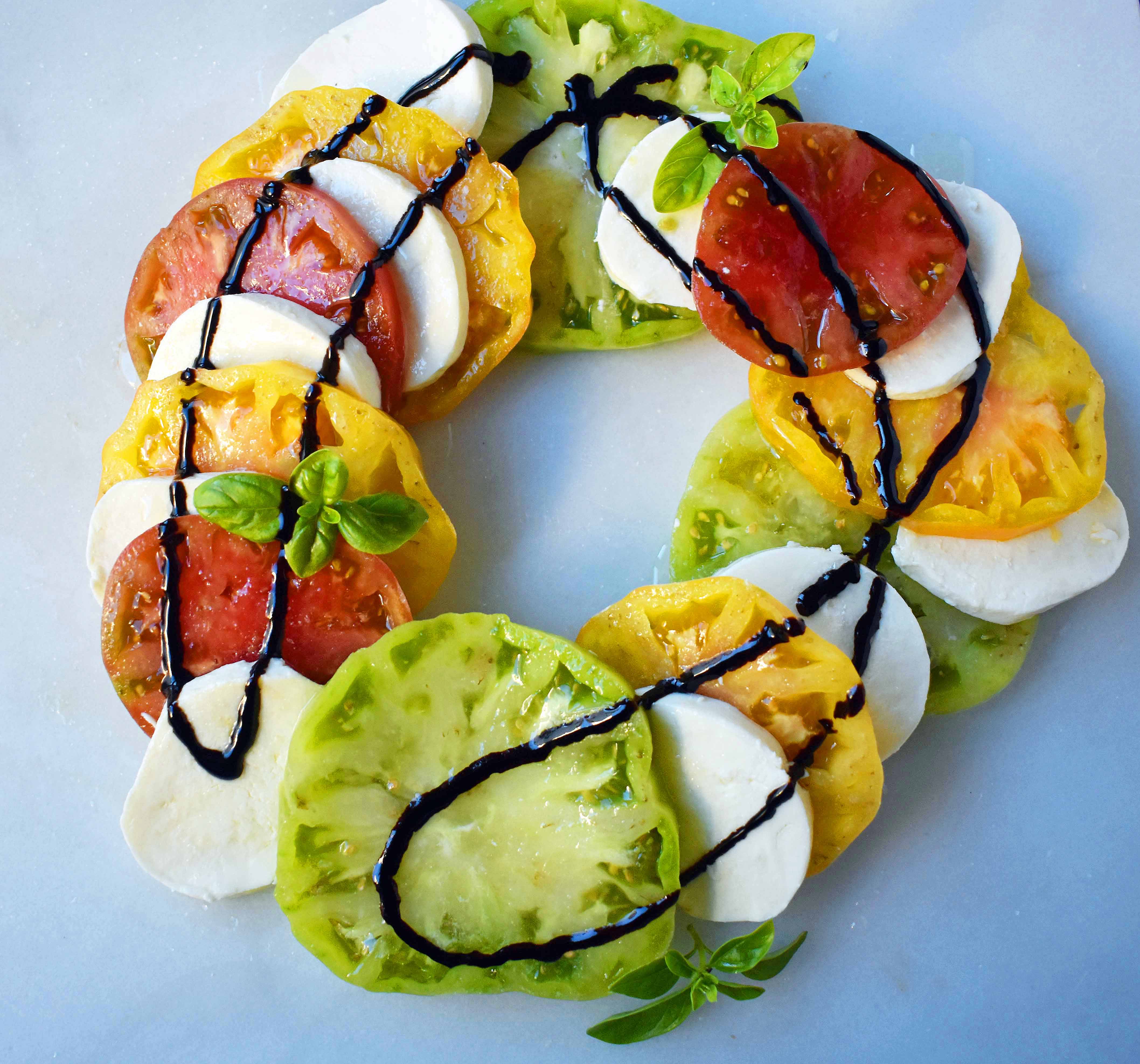Heirloom Caprese Salad Recipe: Heirloom tomato season is here this summer. Heirloom tomatoes in every shade of orange, yellow, and red that are ripe and luscious. A handful that my friends gave me last summer from their gardens are delicious when sliced and topped with flaky salt and a drizzle of olive oil.
I had to stock up and make something big and flamboyant out of those luscious tomatoes after seeing the overflowing containers at Whole Foods one more time. What could be more ideal than a traditional Caprese salad composed of the most basic ingredients?
Classic Caprese salads consist of tomato and mozzarella slices, liberally topped with basil, salt, and pepper, and drizzled with olive oil. A drizzle of thick balsamic vinegar on top might or might not be present.
The name “caprese salad,” or “insalata Caprese,” translates to “salad of Capri.” Italian island Capri is located in the Mediterranean. Though I’m not sure if it started there, it’s Italian and excellent anyway.
Heirloom Caprese Salad Recipe

INGREDIENTS
- 2 pounds mixed heirloom tomatoes or the best ripe tomatoes available
- 8-ounce ball of burrata or mozzarella, preferably fresh or packed in water
- Handful of fresh basil leaves (smaller leaves look nicer)
- 3 tablespoons extra-virgin olive oil
- ½ teaspoon flaky sea salt or ¼ teaspoon kosher salt, to taste
- Freshly ground black pepper
Also See
INSTRUCTIONS
- Slice the tomatoes into ¼′′ thick pieces using a serrated knife. Place them in an array on a sizable serving dish, trying to vary the shapes and overlap the edges.
- Slice the burrata or mozzarella into ¼ to ½ inch pieces (the creamy interior of the burrata makes it difficult to cut into even pieces; I cut mine into ½ inch slices and carefully pulled the slices apart; see photographs).
- Spread the cheese fairly equally across the surface by tucking it beneath and around the tomatoes.
- Distribute the basil leaves evenly, and insert a few more into the nooks and crannies. Over the salad, drizzle with olive oil. Add a large amount of salt and pepper.
- If you have the time, let the salad sit for 30 minutes to allow the flavors to meld and the tomatoes to release some liquid for the best flavor. It is preferable to serve this salad shortly after making it. Refrigerated and protected, leftovers can last for up to three days.
NOTES
- The recipe was developed using advice from Bon Appetit and Serious Eats.
- Turn it green or dairy-free: This salad tastes fine without cheese, provided you use quality tomatoes. I believe this salad would taste good with avocado slices or dollops of my vegan sour cream if you’d like some creaminess.
FAQs AND QUESTION
How to Make the Best Caprese Salad?
1) Ripe, juicy tomatoes:
- Put differently, caprese salads are reserved for the summer! I used an assortment of heirloom tomatoes, but decent garden tomatoes would also function quite well.
- For convenience and the cleanest slices, I suggest slicing them with a serrated knife (my favorite is linked here, and there’s a less expensive one as well; both are affiliate links).
2) Great mozzarella (or burrata)
- If you can get fresh mozzarella, use it. If not, look for mozzarella sticks that are hydrated. Unlike other varieties, the mozzarella balls that are vacuum-sealed in bags don’t absorb tomato juice and olive oil and are instead more rubbery.
- The only significant way I deviated from traditional Caprese salads was by substituting burrata for mozzarella. Burrata is mozzarella with an amazing interior enriched with cream. It delivers greater creaminess and texture and is more delicate than pure mozzarella. If you can locate it, I highly suggest it.
3) Fresh basil
- Beautifully green, well-hydrated basil leaves are what you want. If given the choice, choose the smaller leaves because they appear the nicest.
4) High-quality olive oil
- Expensive olive oil need not be out of your reach. It is important to confirm that the extra virgin olive oil is genuine, unadulterated, and derived from the initial pressing of the olives. Always make sure to screw the lid back on and keep it in a dark, cool area, such as a cupboard.
- An olive’s rancidity or bitterness indicate that it has gone bad. Trader Joe’s Kalamata olive oil or California Olive Ranch (Everyday or Arbequina) are my two favorite olive oils.
5) Flaky sea salt and freshly ground black pepper
- Please, not the sort that comes from salt and pepper shakers. Although kosher salt will also work, flaky sea salt is preferred (Maldon sea salt is well worth the investment).
- The only thing that works well is freshly ground black pepper from a pepper grinder.
